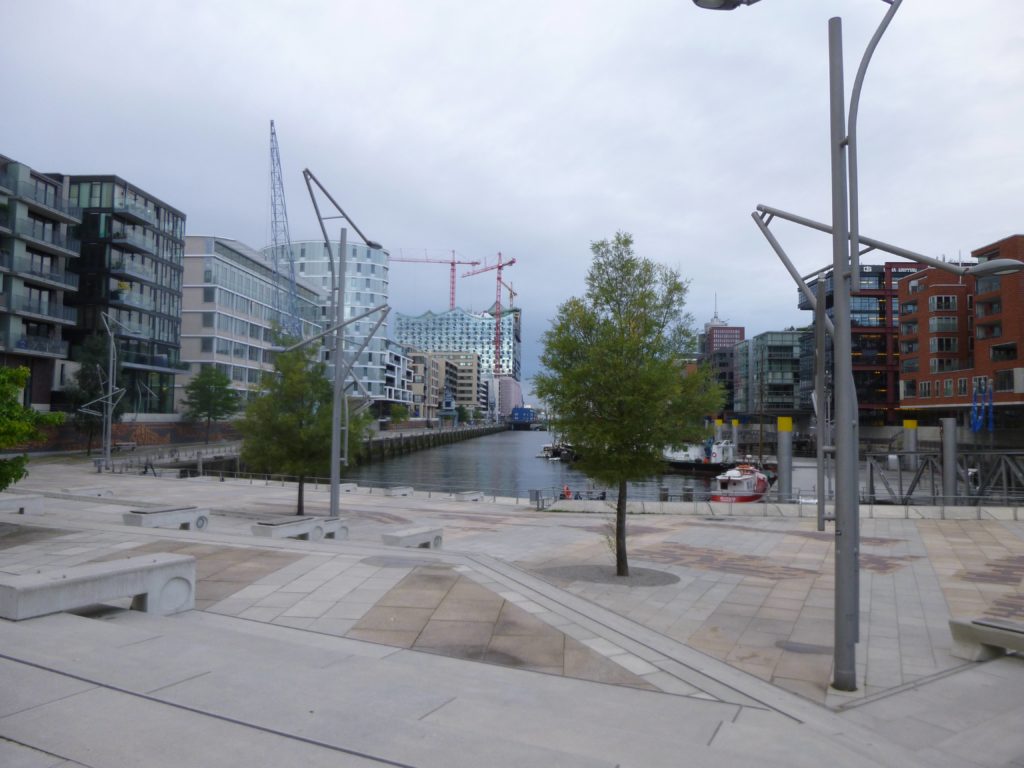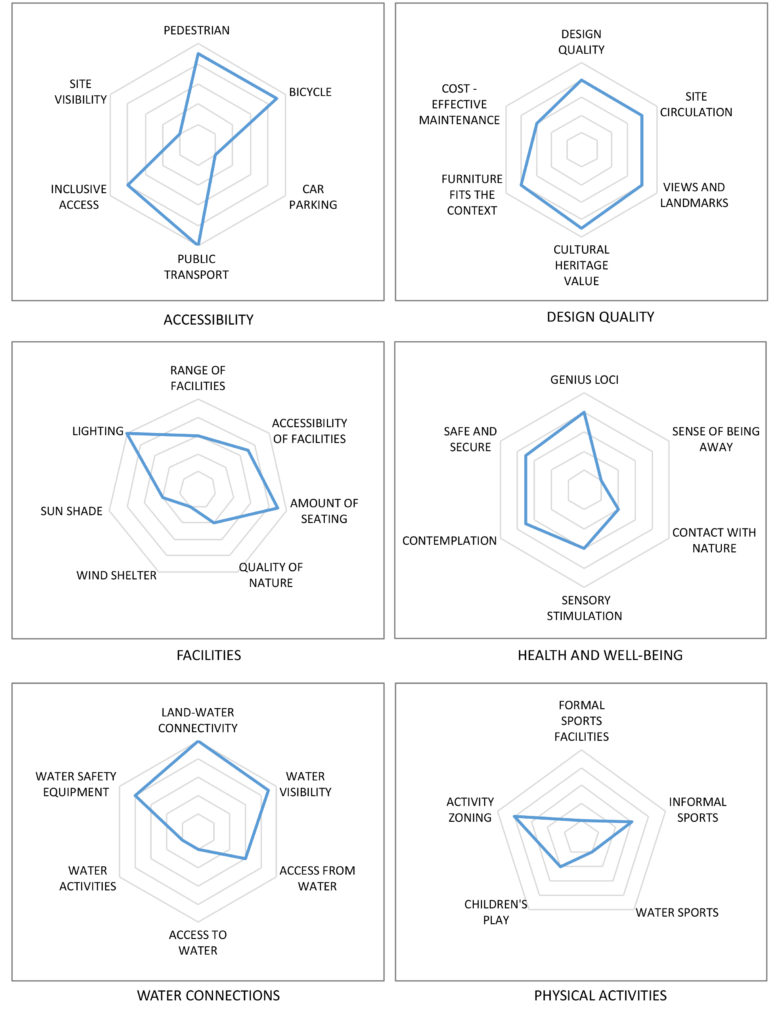
Architect
EMBT Barcelona
Type of Area
Large river with artificial banks
Land/water interaction
Promenade
Harbour
Terrace/steps
Built Environment Types
Completely built
Scale of Impact
District/ neighbourhood
City
Intervention Scale (Spatial)
Moderate site
Project Types
Urban waterfront development
Riverfront development
Public green/space regeneration
Urban/ Rural
Inner urban area
Visibility and Openness
Fully enclosed
Fully contained
Reconnecting to the River
These two linked projects, completed in 2007 to the designs of the Barcelona architecture firm of EMBT for the HafenCity authority, are part of the extensive redevelopment of the old harbour and free trade zone. The “Grosser Grasbrook” area – in Hamburg, a historic port city located on the River Elbe in northern Germany, suffered heavily from Allied bombing in the Second World war.
The project replaced the port structures with an extensive new complex of residential, commercial and cultural buildings set around the various harbour basins. The overall project has been several decades in the making and has provided 6000 homes, 40,000 workplaces and an open space based around the water areas of the dock basins.
The planning included artistic content to give a clear sense of identity to the place, which reflects the old industrial character while including new elements. The River Elbe has a large tidal range which was accommodated through the creation of different levels connected by ramps, stairways and terraces that are used to link the water to the land. Piers and pontoons allow visitors access down to the water.
The Magellan Terraces features stairs arranged like an amphitheatre which focuses views down to the harbour, with a 400m long floating promenade at the bottom. The influence of the Spanish (Catalan) architects is evident in the use of Mediterranean idioms and elements such as large fish bas-reliefs on the walls.
Free form paving patterns and sculptural elements break the visual monotony of extensive surfaces and the space connects with the main street running at right angles, separated by low bollards. At the Marco Polo Terraces, while the design vocabulary remains the same, there are also differences.
Limited numbers of trees and patches of lawn were introduced on each terrace, although these are somewhat small for the scale of the spaces and are dominated by the buildings. The Marco Polo Terraces incorporate raised wooden platforms placed irregularly on the grass. They permit a range of informal uses and also allow good views of the water.
Perception and Meaning
Place identity
Imageability
Sense of place
Legibility
Focal point
Genius loci
Health and Wellbeing
Restorativeness
Aesthetic experience
Place affordance
Increases socialisation
Increased physical activities
Interaction with Water
Visual

Website of the project:
http://www.mirallestagliabue.com/project/marco-polo-terrassen-hafencity-public-spaces/
http://www.mirallestagliabue.com/project/magellan-terrassen-hafencity-public-spaces/
Google map reference
The project scores show that for accessibility, car parking is deliberately excluded from the area and the interior spaces are hidden from the view of the casual observer due to the low level of the water compared to the dock. Design quality is generally high although the site is expensive to maintain due in part to its popularity but also some of the elements, such as the trees set in lots of hard surfacing. The site is open to the elements and lacks shelter and shade and there is little nature present. As a busy urban site it does not permit much of a sense of being away or contact with nature and the other health and well-being aspects are limited due to the inherent site character. The water connections are mainly visual due to the fact that it is a former dock with all the challenges that creates, although access down to the water and some boat access is provided successfully. The site is not designed with lots of physical activities in mind and is not suitable for sports of any type.
